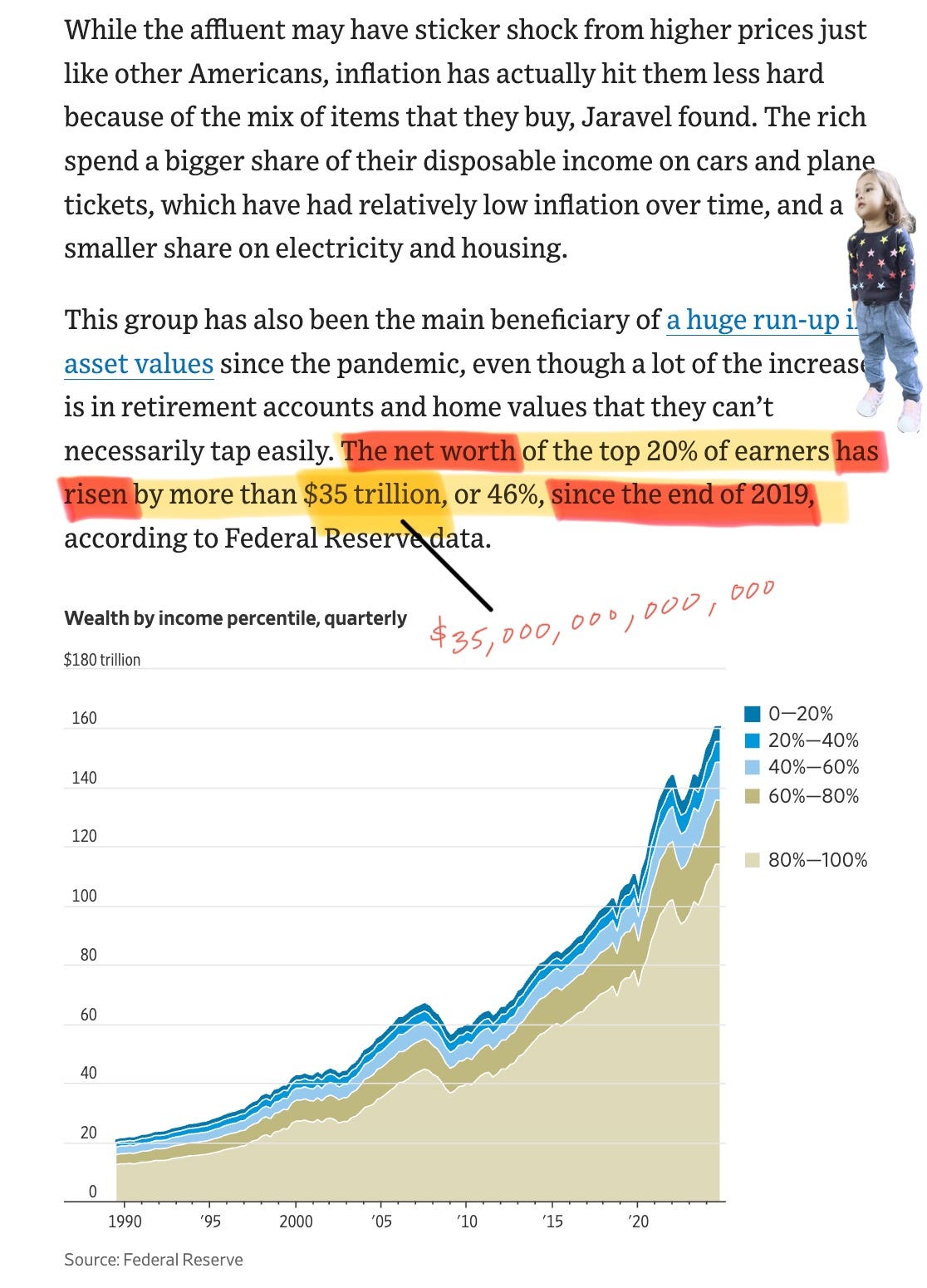The Fed’s “Wealth Effect"
Not just a theory.
Since the end of 2019, M2 (the broad measure of U.S. money supply) has grown from about $15.4 trillion (December 2019, per FRED data) to roughly $22 trillion as of mid-2025.
That’s an increase of about $6.6 trillion, or approximately 43%.
The most explosive growth happened between March 2020 and early 2022, as the Fed and Treasury unleashed unprecedented stimulus.
The massive M2 expansion directly juiced asset prices including equities, real estate, and crypto.
How?
By flooding the system with liquidity.
The top 20% of earners, with the most exposure to these assets …
… saw their net worth balloon in lockstep with the money supply.
The catch?
Most of this wealth is locked in illiquid assets such as homes and retirement accounts.
Purchasing power of cash erodes for all people due to inflation - but assets are the ultimate hedge for inflation because as the money supply increases so do asset values.
Prices always go up!
Maintenance costs, property taxes, and higher living expenses have also eaten into real gains for many.
A-ha moment:
The $35 trillion net worth gain for the top 20% almost mirrors the $6.6 trillion M2 surge when you consider leverage, asset price multipliers, and the fact that most new money flows to those already holding assets.
In other words, the Fed’s “wealth effect” is not just a theory.
It’s a direct pipeline from the printing press to the portfolios of the already-wealthy.
Insight:
The real winners are those who could borrow cheaply against rising asset values (think: HELOCs, margin loans, bitcoin) and reinvest, compounding their gains.
The losers?
Savers, wage-dependent earners, and anyone not holding appreciating assets.
Did you know that Panamanian Geisha is the most expensive coffee bean on the planet? Click on O.P.C. and buy some today before J. Pow front-runs you.




